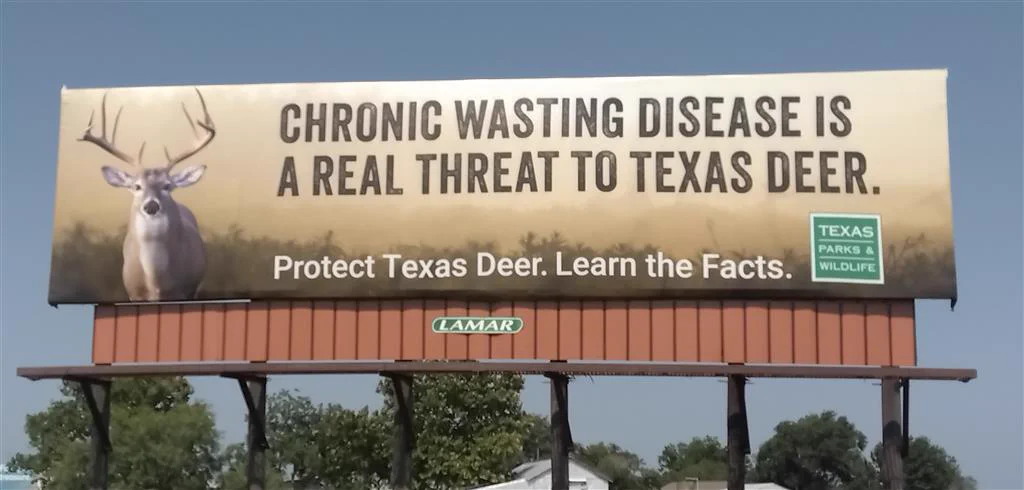The approval of a series of new rules and surveillance zones wasn’t a surprise at the Texas Parks and Wildlife Commission meetings on Aug. 22-23. Nor was the recent Emergency Order increasing movement restriction on breeder deer and requiring visible ID tags on each released deer.
The reaction at the public hearing, though, may have been stronger than anticipated, especially on the topic of billboards dotting the state.
After positive tests for chronic wasting disease at several breeding facilities, new zones, extending two miles around each facility, were set in Hunt, Kaufman, Bexar, Frio, Sutton, Duval and Brooks counties.
Of 97 comments received, 75 percent were in favor of the zones, although several people said they wanted a two-year time limit on the zones.
What spurred the ire of several breeders and others, was a campaign by Texas Parks and Wildlife Department to educate the public and raise awareness about CWD, especially the placement of billboards across the state saying in capital letters, “Chronic Wasting Disease Is A Real Threat To Texas Deer,” which several people said aren’t educating hunters, but rather are an attempt to scare them.
Marty Berry, a rancher and deer breeder, said the billboards are “chasing off hunters,” even though there is no indication the disease could cause any issues with humans.
“There is no end game in sight,” he told the commission. “Almost all of our hunters now want to donate their meat.”
Tim Glass contended TPWD’s data painted a bleak portrait of deer breeders.
“There have been 540 positive animal detections,” he said. “Free range have been 20 percent (101) and 298 from breeder pens, but two facilities (Hunt and Uvalde counties) account for 302 of those. The agency presents the problem as statewide, and neither of these counties has had a positive free-ranging animal.”
John True, Texas Deer Association’s president, said the findings show the antemortem (live) testing process works, and the emergency rules weren’t necessary.
Others spoke of their approval and the need for the changes. “This is a monumental step forward,” said Donnie Draeger, wildlife manager at a ranch in Maverick County. “Antemortem testing is just a tool for herd surveillance.”
John Letz, Texas Wildlife Association’s president, said the emergency rules were required.
“There have been a rash of cases at facilities,” he said.
A number of people pointed out the work being done to breed white-tailed deer with proven genetic resistance to the disease.
Dr. Mickey Hellickson, a wildlife biologist and former manager of the King Ranch, spoke and provided a letter to the commission, saying:
“Thanks to cutting edge genetic research by Dr. Chris Seabury at Texas A&M University– College Station, deer breeders all across Texas are now selectively breeding their captive deer herds to genetically reduce susceptibility to CWD. These efforts will no doubt lead to captive herds that are not only much less susceptible to CWD than native whitetail herds in Texas, but I predict that in the not-too-distant future, breeder deer will once again be transported all over Texas to be purposely released onto low fenced properties in order to combat against CWD.”
One deer breeder has taken the fight to the courts. Robert Williams, of RW Trophy Ranch in Kaufman County, after several orders to destroy all of his deer, filed suit in Kaufman County, recently obtaining an injunction barring the state from killing 500 deer on his property until after a jury trial set for February 2024.
“One of our primary concerns is that they can come in and kill the deer without giving due process,” Williams’ attorney, Jennifer Riggs, said in a recent article about the suit. “There’s no hearing to test whether the deer are really a threat to any other species. They don’t have to prove the basis for why they want to kill the deer.”
Texas Agriculture Commissioner Sid Miller told the commission the decisions made shouldn’t be an attack on either ranchers or breeders.
“We want to pick winners and winners, not winners and losers,” he said.


